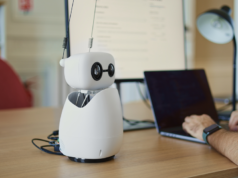For Joe Biden, the clock is ticking. The Vice President has roughly two months left to continue leading the Cancer Moonshot initiative, an effort to significantly speed the pace of progress in cancer detection and treatment. It’s a personal mission for Biden, whose son Beau died from brain cancer in 2015.
“We had access to the world’s best nurses, physicians, and researchers,” the Vice President wrote in a report on the initiative in October. “The more time we spent with them, the more we understood that even if we couldn’t save our son, the science, medicine, and technology are progressing faster than ever to save countless other sons and daughters.”


There’s no guarantee that Biden’s moonshot — which was announced at the State of the Union address this past January — will survive the transition to a Trump presidency intact. White House initiatives exist at the pleasure of the administration, and don’t require congressional approval to begin or end. But even if the initiative is scuttled, that it was formed at all is evidence of a shift in the larger fight.
Cancer has become an innovation priority, and researchers in a wide variety of fields are proposing novel approaches to finding, containing, and destroying it. In the near term, the R&D poised to have the biggest impact involves more powerful data analysis and new drug therapies. But in the decades to come, it’s robots that will be called upon to pilot themselves through the bodies of patients, to relay diagnostic data back to doctors, and to deliver precision-guided drug payloads inside tumors.
The recent history of cancer treatment is surprisingly full of robots. In 2000, the FDA cleared the Da Vinci Surgical System, a hulking, multi-armed robot remotely operated by humans for use in general laparoscopic surgery, during which instruments and cameras enter the body through small incisions. Laparoscopic surgery existed long before the Da Vinci, but the machine promised to increase the precision of those using it, and to reduce the chances of fatigue during hours-long operations. Instead of hunching over a patient while holding long, body-penetrating instruments, the surgeon sits at a console, peers at a 3-D video feed, and manipulates robotic tools with joysticks.
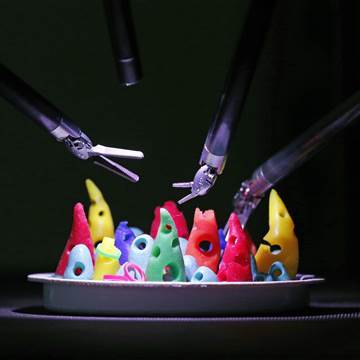
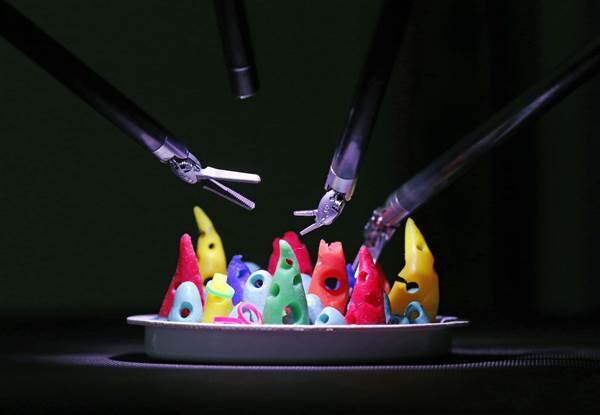
The promise of fewer complications and shorter hospital stays (since the procedures involve such small incisions) made Da Vinci systems wildly popular among the medical elite. They’re now found in every state in the U.S., including at the country’s leading cancer centers at the Mayo Clinic in Minnesota and Memorial Sloan Kettering Cancer Center in New York City. Of the more than 200,000 minimally-invasive procedures carried out annually using Da Vincis, the majority are cancer-related.
With more than 3,000 sold worldwide, these machines have been at the forefront of cancer surgery. But as robots go, their age is showing. Da Vincis have no autonomy, and are only as skilled as the people controlling them. They require multiple human helpers, as well, from those who swap out the instruments on the robot’s arms to people tasked with moving tissue and whole organs out of the way while the surgeon works. They are also huge, expensive devices, taking up precious real estate in operating rooms, and they’re priced at up to $2 million, a figure that’s only risen in the 16 years since their introduction despite strong global demand.
The future of cancer-fighting bots is, in many ways, the polar opposite of the Da Vinci, with systems that are smaller, more autonomous, and self-contained — less like advanced surgical tools and more like a robotic version of the body-exploring miniature vessel from the 1966 sci-fi film, Fantastic Voyage.
Researchers at Vanderbilt University’s STORM Lab in Tennessee are developing capsule robots that can navigate patients’ gastrointestinal tracts, gathering diagnostic data and extracting tissue. Present-day medical capsules are sensors that you swallow, with no onboard motors to change the orientation of cameras. The researchers at STORM Lab want to roboticize these devices, adding digital intelligence and actuators to control those tiny cameras, as well as components that can alter the capsule’s passage through the body, and even take biopsies from specific areas. Functioning like miniature unmanned submarines, these capsules could also vent gases from exhaust ports, distending the intestine in order to get a better look at a given stretch of organ wall.
The team’s initial focus — to improve the detection of colorectal cancers — happens to be one of the explicit goals of Biden’s moonshot initiative. But the larger trend in anti-cancer robots is moving beyond the merely small, and into the microscopic.
During the past year, three separate teams of researchers around the world have presented work related to the use of bacteria to deliver drug therapies to tumors. Though none of this year’s experiments employs actual robots, researchers see a direct link between the use of naturally-occurring microorganisms and the micro and nanobots to come. According to Sylvaine Martel, director of the Polytechnic Montréal Nanorobotics Laboratory, his three-university research team picked bacteria that would act as biological stand-ins for robots. They chose bacteria that were not only attracted to low-oxygen areas — such as tumor sites, since cancer cells consume oxygen as they multiply — but that possess a kind of internal compass, and would be drawn to magnetic fields.
“We looked at it like engineers,” Martel says. “This thing has all the components that we’d want to put in a future nanorobot.” That includes what he describes as “rotary motors,” functioning as tiny propellers. “They’re very fast, moving at 200 times their body length per second,” Martel says. “Very efficient machines.”
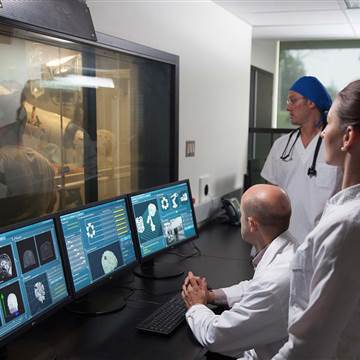
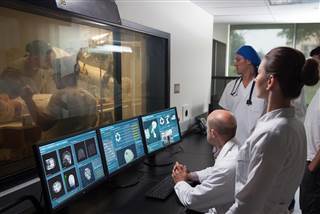
In experiments with mice, these bacteria were guided to the general area of a tumor with magnets, and then left to autonomously zero in on their targets based on low oxygen levels — since cancer cells consume oxygen as they multiply, a drop in oxygen is a tell-tale sign of their presence. At a size of 1.5 microns, the bacteria were small enough slip into holes in the sides of a tumor’s blood vessels, and travel to the heart of the tumor before releasing their chemical payloads.
That size is key to the mission of any bacteria or bacteria-mimicking delivery system. For all the discussion of nanorobots in science fiction, constructing motors and other robotic components that are a fraction of the size of a human hair (which are roughly 80 microns across) remains out of reach. And if a body-navigating bot can’t release drugs inside cancerous tissue, then it’s little better than traditional chemotherapy, which floods the body with powerful chemicals in the hopes of hitting vital targets, and often wreaks havoc on the patient in the process. If chemotherapy is carpet-bombing, nanobot therapy is a laser-guided munition.
The idea of hunter-seeker nanobots is strange enough, but Martel believes doctors could eventually craft cancer fighters that merge bacteria with artificial components, or what amounts to microorganic cyborgs. Bacteria might need special…


